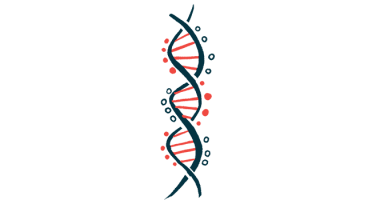Shorter Telomeres in Young Adults with PWS May Indicate Premature Aging, Study Reports

Telomeres — a marker of cell division and lifespan — were found to be shorter in young adults with Prader-Willi syndrome (PWS) than in healthy controls, which could be a sign of premature aging, a study reports.
The study, “Evidence for accelerated biological ageing in young adults with Prader-Willi syndrome,” was published in The Journal of Clinical Endocrinology & Metabolism.
Adults with PWS have an increased risk of developing age-associated diseases early in life, such as type 2 diabetes and cardiovascular disease. One possible explanation is that they experience an accelerated aging process.
Telomeres are short DNA sequences located at the tip of chromosomes, and are regarded as “molecular clocks” of cellular division and lifespan. They protect chromosomes from damage, preventing the loss of essential DNA.
Over time, telomeres become shorter during cell proliferation until they eventually stop cell division or cause cell death. This hampers tissue regeneration and could be one of the mechanisms that trigger aging.
Researchers in the Netherlands and U.K. hypothesized that accelerated aging could partly explain the increased mortality rate and greater risk for age-associated diseases in young adults with PWS.
They measured the length of telomeres of white blood cells, or leukocytes, in 47 young adults with PWS (median age of 19.2 years) enrolled in the Dutch Young Adult PWS study (EudraCT Number: 2011-001313-14). All participants had been treated with growth hormone (GH).
Participants with PWS were compared to 135 age-matched healthy controls and to 75 young adults who were born short for gestational age (SGA, median age of 20 years) and treated with GH during childhood because of their short stature.
Results revealed that PWS patients were younger in gestational age and lower in weight at birth than the healthy controls, and were also shorter at birth and in adulthood. Compared with the SGA group, PWS patients had higher weight and height at birth, and were taller as adults, with a longer duration of GH treatment.
Importantly, genetic tests revealed shorter telomeres in PWS patients — median 2.6 — than in either the control or SGA group (median of 3.1 in each group). Potential confounding effects, including age, gender, gestational age, as well as weight and height at birth, did not affect these results.
In fact, 44 of the 47 PWS patients (94%) had a telomere length below the 50th percentile of healthy young adults, with 20 (43%) below the 10th percentile.
The findings also showed that, within the PWS group, a lower telomere length tended to be associated with lower lean body mass and IQ.
Overall, “young adults with PWS have significantly shorter median LTL [leukocyte telomere length] compared to age-matched healthy young adults and GH [growth hormone]-treated young adults born SGA,” the researchers wrote.
“The shorter telomeres might play a role in the premature ageing in PWS, independent of GH,” they added. “Longitudinal research is needed to determine the influence of LTL on ageing in PWS.”






